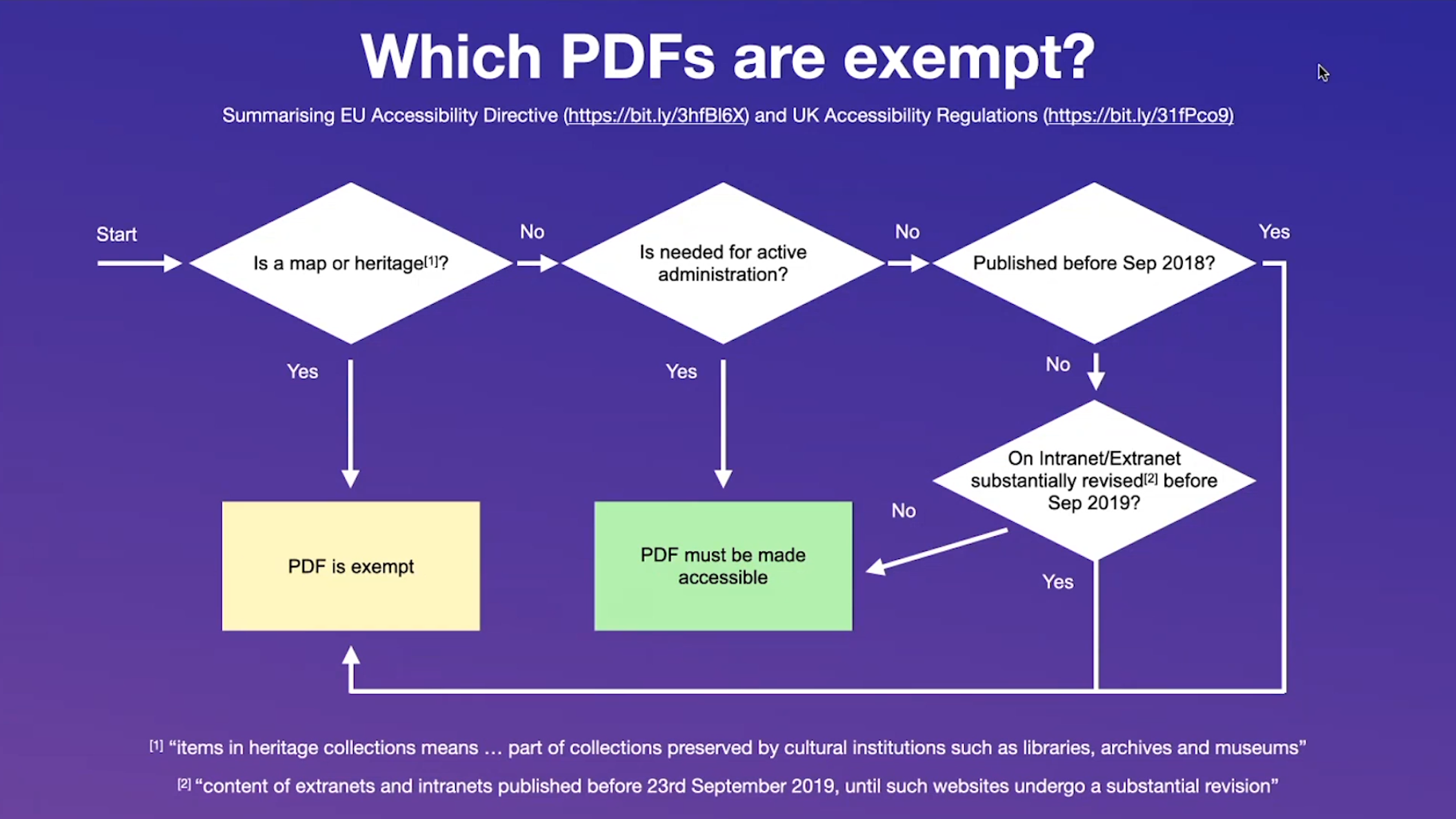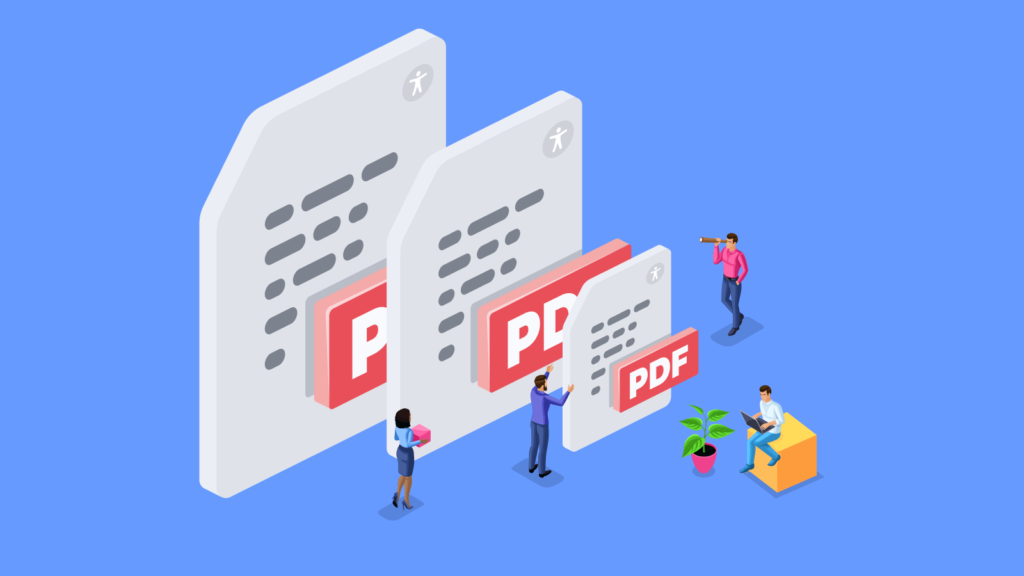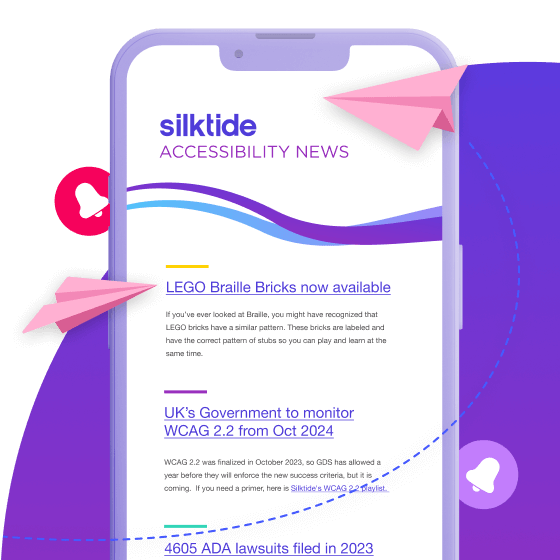In part two of our PDF accessibility guide, we’ll help you understand PDF accessibility law and the practical steps you can take to make your PDFs accessible.
What we covered in part 1
- A little bit about how PDFs work
- How PDFs are experienced by people with a disability
We discussed what PDFs are, why they were designed, and their limitations.
We talked about how scanning, scrolling, and understanding context are far less easy for someone who is, say, blind.
What we’ll cover in part 2 (this post)
- What the law requires
- How to actually make a PDF accessible
We’ll touch upon the legal requirements of the EU Accessibility Directive, but the principles apply globally.
Finally, in terms of actually fixing PDFs, we’ll take two approaches. Firstly, we’ll talk about amending your source document, and secondly, we’ll discuss working on existing PDFs for which you have no source.
How the UK and EU law defines your obligations.
The short, but inaccurate, version is that all public sector websites must have been made ‘accessible’ by 23rd September 2020.
Now, rather confusingly, neither the EU Web Accessibility Directive nor the UK Regulations define what that means for PDFs, outside of referring to ‘PDF/UA‘, an ISO standard for accessibility.
Both directives refer to WCAG 2.1 AA, but this isn’t a thing for PDFs.
In practice, all you really need to know is that you need to buy Acrobat Pro DC. It’s probably your best option in covering all your bases in the least amount of work. We’ll cover that a bit later on in this article.
Which PDFs, if any, are exempt?
Not every PDF on your website has to be ‘accessible’. There are a number of exceptions based on the type of information and when it was first published.

Maps or heritage items
Heritage items are essentially parts of collections by libraries, archives and museums. It’s unlikely that this applies to UK public sector websites, so can be ignored.
Maps on the other hand are one type of media that are understandably difficult to make accessible, so they are exempt from the regulations. It would be wise, of course, to include any appropriate address information elsewhere on the page.
Active administration
If a PDF is regularly used by your organization in a process or service you deliver, then it absolutely has to be made accessible. It also doesn’t matter how old this PDF is.
So any forms you have, as part of an online application process or similar, are not exempted.
PDFs published before September 2018
If a PDF was published before September 23rd 2018, it is automatically exempt (unless for active administration as outlined above).
PDFs on an Intranet/Extranet
If you have private content behind a login area for internal use, and the intranet or extranet itself has not been substantially revised before September 2019, then PDFs located there are exempt.
The reason the regulations exempt intranets is probably because of the amount of work required to replace an entire system. A side effect of this is that it potentially offers an incentive to not upgrade the intranet, which likely wasn’t their intention when they drafted the legislation.
As an aside, there is an exemption across the whole of the EU Accessibility Directive for anything that would cause an organization a ‘disproportionate burden’. That is, where content is deemed to be so hard to make accessible that you could argue it would be completely disproportionate.
For example, if you discovered you’d need to spend three times your annual budget to make a PDF accessible then you can make a reasonable case that it should be exempt.
It’s very difficult to make this argument for most PDFs but if you had, say, 50,000 obscure PDFs that were very rarely accessed, you could make this argument.
How to make a PDF accessible
We actually created this post series from a webinar we ran earlier this year. Due to the fairly complex nature of making PDFs accessible, I’m just going to hand you over to our CEO, Oliver Emberton, in this video demonstration from an earlier webinar to Socitm members.
The headline actions you should take to make a PDF accessible are:
- Use the source document if possible
- Make an HTML alternative version
- Use Adobe Acrobat
The video above runs through using Word as your source document, making it as accessible as reasonably possible, and exporting it into Acrobat DC.
It also (at around the 18-minute mark) runs through fixing an existing PDF without the source document, directly in Acrobat DC.
You should pay attention to document tagging and reading order when working in Acrobat.
So, what have we covered?
In part 1, we discussed what PDFs are, why they are useful, and their limitations in terms of accessibility.
We talked about how PDFs are evaluated by screen readers and the importance of correct document tagging and reading order.
In this part, we touched upon the law surrounding PDF accessibility, in the EU and UK, and took a deep dive into how to make your PDFs practical.
As you can see, it’s a fairly complicated and involved procedure. If your website contains hundreds of PDFs (which is not unreasonable) then it’s fair to say you have your work cut out.
The UK Government Digital Service, which creates all Gov.uk websites, specifically recommends not using PDFs for your content wherever possible, or at least, providing alternative options in HTML.
Our conclusion? We agree. PDFs cause a lot of pain.
That said, many of you will still need to use them. We’re soon launching some updates to Silktide which improve PDF functionality, allow you to test them in a browser, and suggest remediation (with specific instructions on how to fix them in, say, Word).

